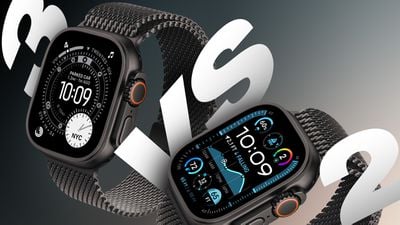Apple Watch Ultra 2 vs. Ultra 3 Buyer’s Guide: 10 Upgrades Compared
The Apple Watch Ultra 3 introduces the next-generation model in Apple’s rugged smartwatch lineup, succeeding the second-generation Ultra that landed two years earlier. While the Ultra 3 carries forward the core ethos of endurance, precision, and outdoor performance, the question for buyers is how substantial the upgrades are and whether upgrading from the Ultra 2 makes financial sense. This comprehensive breakdown examines the differences between the Ultra 2 and Ultra 3 across key areas, helping readers understand what changes truly affect daily use, long-term value, and overall experience. In broad terms, the Ultra 3 represents a modest step forward rather than a sweeping overhaul. It sits on the same platform with many shared capabilities, yet it introduces meaningful improvements in display technology, connectivity, and charging that can influence usability in specific scenarios. For most users, the Ultra 2 continues to deliver the features that matter most, and the Ultra 3’s advantages are nuanced rather than revolutionary.
Overview of the Ultra 2 and Ultra 3 Generations
The Ultra 3 is positioned as a refinement over the Ultra 2, with the most visible differences centered on the display and certain connectivity enhancements. The two models share the vast majority of their core features, including their rugged design philosophy, health tracking capabilities, and overall user experience. The Ultra 3 brings a larger display footprint, thanks to a wider viewing area that enhances readability and interaction under challenging conditions. The Ultra 2 uses a standard OLED display, while the Ultra 3 expands into a wide-angle OLED configuration, coupled with the newer LTPO3 technology, which supports improved refresh-rate behavior and viewing angles. This combination is designed to offer a more comfortable and legible screen in a wider range of viewing positions and lighting scenarios.
From a hardware standpoint, the Ultra 2 relies on the S9 chip, while the Ultra 3 upgrades to the S10 chip. The CPU naming indicates a generational shift, but crucially, Apple notes that the S10 is essentially a more compact version of the S9 rather than a dramatic performance leap. In practice, this means performance parity in many common tasks with some efficiency gains, rather than a dramatic boost in processing power. On the connectivity front, the Ultra 2 supports LTE and UMTS, whereas the Ultra 3 moves to LTE and 5G compatibility, reflecting the broader industry trend toward next-generation mobile networks. The Ultra 3 also introduces satellite connectivity for emergency communication, a capability not present on the Ultra 2. These changes align with Apple’s ongoing strategy to bring more iPhone-like features to the Apple Watch while preserving the strength of its health and safety features in a wearable form.
Battery capacity also shows a measurable difference between generations. The Ultra 2 includes a 2.178 watt-hour battery, while the Ultra 3 increases to 2.313 watt-hours, representing a 6% improvement in energy storage. This addition, while modest, supports longer operation in everyday use and can contribute to better overall endurance in demanding outdoor activities. Fast charging remains a highlighted capability, with the Ultra 2 able to reach 80% in about one hour, and the Ultra 3 accelerating charging to about 45 minutes for that same 0–80% target. Collectively, these hardware and power-management updates deliver a product that remains rugged and capable but with refined efficiency and a more capable display experience than its predecessor.
In summary, the Ultra 3 maintains the core identity of the Ultra family while introducing targeted improvements that enhance the user experience. The most substantial changes are concentrated in the display technology and the additional connectivity options, particularly the move to 5G and the inclusion of satellite-based emergency communication. Battery life sees a modest uplift, and charging is noticeably quicker, which is a practical benefit for users who rely on their watch during extended outdoor excursions or travel. For most potential buyers, the Ultra 2 remains a formidable device with nearly identical health features and a familiar ecosystem, while Ultra 3 offers incremental improvements that may be compelling to those who prioritize display quality and modern connectivity. The decision to upgrade will therefore hinge on how much value a larger, more versatile display, faster charging, and satellite SOS bring to an individual’s daily routine and outdoor ventures.
Display and User Experience Improvements
Display quality and clarity are central to the Ultra 3’s value proposition, and these aspects are the most visible differentiators compared with the Ultra 2. The Ultra 3 employs a wide-angle OLED display, expanding the usable screen area and improving visibility at wider viewing angles. This design choice makes it easier to read and interact with watch faces and apps from unusual wrist positions or in bright, dynamic environments such as outdoor sports or rapid movements. The increased display footprint ensures that information is legible without requiring unnecessary tilting or twisting of the wrist, a practical benefit for athletes, hikers, and outdoor enthusiasts who rely on quick, glanceable data during activities.
Accompanying the display hardware is the transition to LTPO3 technology in the Ultra 3. LTPO3 brings improvements in display refresh behavior, enabling smoother transitions between high and low refresh rates as needed. This helps balance power efficiency with a responsive user experience, particularly when the device reduces motion to conserve energy during less demanding tasks. The combination of a larger display and LTPO3 also contributes to a more fluid interaction with watch faces, apps, and notifications, enhancing day-to-day usability in a way that is noticeable even during routine wear.
One notable usability detail is the persistent ticking seconds hand that appears on some watch faces when the display operates at a lower refresh rate. This design cue preserves a traditional watchlike feel while leveraging the efficiency benefits of LTPO3. For users who appreciate a more classic, analog-inspired presentation, the presence of a ticking seconds hand can enhance readability and time tracking during activities such as running, cycling, or training sessions where precise timing matters. The practical effect is a more robust and legible interface in scenarios where quick time checks are essential, especially in outdoor settings where glare, movement, or lighting conditions might otherwise hinder readability.
In terms of overall visual experience, the Ultra 3’s display improvements are designed to deliver clearer, more versatile viewing across a broader range of angles and usage contexts. While the Ultra 2 already offered a high-quality screen suitable for most environments, the Ultra 3’s wide-angle OLED panel with LTPO3 support provides a perceptible uplift in readability and smoothness, a benefit that becomes particularly relevant for users who frequently rely on the device in strenuous physical activities, in dim lighting, or during rapid, dynamic motions. The combination of a larger display, improved viewing angles, and enhanced refresh-rate management yields a more engaging and practical visual experience that translates to better interaction with maps, workout metrics, heart-rate data, and real-time alerts.
Beyond the raw hardware improvements, the user experience is influenced by how these changes interact with software features, watch faces, and apps. The broader display area enables more information to be presented at a glance, reducing the need to scroll or switch faces during workouts or navigation. The LTPO3-driven efficiency helps maintain smooth animations and transitions, even when the screen is displaying complex watch faces with multiple complications. This translates into a more cohesive and immersive experience when using the Ultra 3 in conjunction with fitness apps, outdoor navigation, or health monitoring dashboards. In practice, the result is a device that feels more capable and responsive in daily use, especially for users who rely heavily on glanceable data and rapid access to essential information during activity.
In conclusion, the Ultra 3’s display technology represents a meaningful, user-facing enhancement over the Ultra 2. The combination of a larger, wide-angle OLED panel and LTPO3 efficiency yields a more readable, responsive, and versatile screen experience. The persistent seconds hand on select faces adds a touches of traditional watch aesthetics without sacrificing modern digital functionality. For users who spend substantial time outdoors, engage in high-intensity activities, or simply value a more legible interface, these display-oriented improvements offer a clear and practical upgrade path. For owners of the Ultra 2, the decision to upgrade will depend on how much weight they place on improved viewing angles, smoother refresh behavior, and the presence of the seconds hand on their preferred watch faces.
Connectivity, Satellite SOS, and Emergency Features
Connectivity remains a core consideration for smartwatches, and the Ultra 3 expands capabilities in ways that align with broader industry trends and user expectations. The Ultra 2 supports LTE and UMTS connectivity, providing reliable cellular access for calls, messages, and data when away from the iPhone. In contrast, the Ultra 3 upgrades the cellular experience to LTE and 5G. This shift reflects an industry-wide emphasis on higher data speeds and more robust online connectivity, which translates into faster app loading, quicker data transfers, smoother streaming capabilities for workouts, and more reliable background syncing with the broader Apple ecosystem. The practical impact of 5G in a smartwatch remains nuanced, but for users who frequently stream maps, music, or download workout plans on the go, the Ultra 3’s enhanced connectivity offers tangible benefits.
A standout new capability in the Ultra 3 is satellite connectivity for Emergency SOS. This feature marks a significant step in personal safety, enabling users to contact emergency services even when cellular coverage is unavailable. The addition of satellite-based SOS complements the existing emergency features available on Apple devices, extending protection to remote or rugged environments where traditional networks may be unreliable. For adventurers, outdoor enthusiasts, and travelers who frequently operate in remote locations, this capability can provide a critical safety net, potentially reducing response times in emergencies and offering peace of mind in challenging conditions.
Another dimension of the Ultra 3’s connectivity is the overall improvement in power efficiency related to the new display and processing components, which, combined with faster charging, helps ensure that higher connectivity activity does not disproportionately drain the battery. In real-world use, this means users who leverage 5G or satellite SOS during activities like hiking, climbing, or expeditions can still rely on the watch to perform essential functions without excessive downtime for charging. The Ultra 2, while offering dependable LTE connectivity, lacks the 5G support and satellite emergency features that are now part of the Ultra 3’s repertoire, making the latter a more capable option for those who require more robust remote safety and connectivity options.
In sum, the Ultra 3 broadens connectivity in two meaningful directions: adoption of 5G for faster data transfer and a satellite-based Emergency SOS system that can function without standard cellular networks. These features align with the needs of power users who spend time away from urban centers and rely on reliable, proactive safety mechanisms. For everyday users who rarely venture far from their iPhone and a reliable cellular network, these enhancements may be less impactful on a daily basis, though they still contribute to a more capable and future-ready smartwatch experience. The Ultra 2 remains a strong choice for those who do not require the latest in connectivity and safety features, but the Ultra 3’s improvements offer a clearer incentive for buyers who prioritize expanded network options and enhanced emergency support in remote environments.
Processing Power, Health Features, and Platform Parity
From a performance vantage point, the Ultra 2 and Ultra 3 share a substantial portion of their health and core feature set, with the most notable difference being the shift from the S9 to the S10 chip. The S10 is described as a more compact version of the S9, meaning that there is not a dramatic escalation in raw computing performance between generations. In practical terms, users should not expect a sweeping leap in processing speed, gaming capabilities, or app loading times when moving from Ultra 2 to Ultra 3. The CPU change signals architectural refinement rather than a revolution in raw horsepower. For most users, especially those already satisfied with Ultra 2 performance in terms of everyday tasks, the CPU upgrade is unlikely to translate into a noticeable boost in real-world speed.
Health features are a critical pillar of the Apple Watch ecosystem, and in this comparison, Ultra 2 and Ultra 3 remain closely aligned on health-related capabilities. The Ultra 2 already offers the health-tracking suite that Apple targets for the Ultra line, and the Ultra 3 retains these same features with enhancements stemming primarily from other areas (display, connectivity, and charging efficiency). In terms of health sensors, metrics tracked, and the depth of health insights available through the watchOS platform, users will find substantial parity between the two models. The refresh to the S10 chip in the Ultra 3 does not primarily manifest as new health sensors, but rather as improved efficiency, allowing more breathing room for complex tasks and longer battery life during feature-intensive sessions.
For those contemplating the upgrade, the presence of the same overarching health framework across both devices means that the Ultra 2 already delivers the key wellness benefits—heart rate monitoring, ECG, blood oxygen, activity tracking, and sleep insights, among others—that users expect from an Apple Watch in this category. The Ultra 3’s advantages come through the display improvements, newer connectivity options, and charging efficiency rather than a fundamental expansion of health capabilities. This parity in health features reinforces the argument that upgrading from Ultra 2 to Ultra 3 should be motivated primarily by display quality, connectivity expansion, and charging speed considerations, rather than a need for new health sensors or capabilities.
In terms of software support and ecosystem, both models benefit from the same watchOS updates and compatible app ecosystems. Apple’s strategy has consistently emphasized maintaining a robust, feature-rich software experience across generations while delivering hardware improvements that feel practical and incremental rather than disruptive. For users who are already embedded in the Apple ecosystem, the Ultra 3 offers the promise of smoother interactions, more fluid interfaces, and better battery management during demanding tasks, which can translate into a more cohesive and enjoyable user experience over the long term. However, the core health-tracking capabilities and many of the essential watch features remain consistent between Ultra 2 and Ultra 3, making the upgrade primarily attractive for those who place a higher priority on the display, mobile network versatility, and faster charging.
Overall, the Ultra 3’s processing and health feature parity with the Ultra 2 underscores a pattern in this generation: meaningful experiential upgrades lie more in display technology, network connectivity, and power management rather than dramatic jumps in processing power or health feature sets. The S10 chip’s role is to refine power efficiency and maintain a smooth user experience in concert with the LTPO3 display, which supports better performance in everyday tasks and more reliable operation during activity tracking. For readers evaluating the decision to upgrade, it’s important to weigh these gains against the current needs and usage patterns, particularly whether the enhanced display, 5G capability, and satellite SOS offer tangible advantages for their typical routines.
Battery Life and Charging Efficiency
Battery life and charging performance are critical in a rugged smartwatch aimed at outdoor use, travel, and continuous activity tracking. The Ultra 3 delivers a modest but meaningful improvement in energy storage compared with the Ultra 2, reflecting a deliberate push toward greater endurance during extended wear in challenging environments. The Ultra 2’s battery capacity sits at 2.178 watt-hours, while the Ultra 3 increases to 2.313 watt-hours. This 6% increase in capacity translates into improved endurance in real-world scenarios, especially during workouts, maps usage, and GPS-intensive activities where battery draw tends to be higher. Users who rely on longer sessions away from power sources may notice a practical benefit in the Ultra 3’s longer potential run times.
Charging performance is another area where Apple has emphasized efficiency. The Ultra 2 supports fast charging to 80% in roughly one hour, providing a reasonable recovery window for daily users who might need to top up during a day of activities. The Ultra 3 steps this up by reducing the time to reach 80% to about 45 minutes, offering a noticeable improvement for users who are often on the move or who engage in back-to-back activities requiring quick recharging. In everyday use, this faster charging translates into shorter downtime for the watch, enabling more consistent availability for notifications, health tracking, and navigation features throughout the day.
From a practical perspective, the combination of a larger battery and faster charging in the Ultra 3 reduces the likelihood of power-related interruptions during critical moments, such as training sessions, long hikes, or expedition trips where access to charging may be limited. While the overall battery life remains influenced by display usage, network activity, and sensor operation, the Ultra 3’s improvements contribute to a more resilient experience, particularly for users who push their devices during outdoor adventures. For Ultra 2 owners weighing a potential upgrade, the enhanced battery capacity and quicker charging time can be appealing if daily routines involve long, continuous wear and frequent usage of location services and fitness tracking.
It’s worth noting that real-world battery performance also interacts with the improved LTPO3 display and broader network capabilities. The LTPO3 technology helps manage the display’s refresh rates more efficiently, reducing unnecessary power drain when the device is not actively displaying rapidly changing information. This synergy with the increased battery capacity further supports the Ultra 3’s endurance in scenarios where users rely on the watch for extended navigation, health monitoring, and real-time updates. Conversely, Ultra 2 users who are satisfied with their current battery life, and who do not frequently utilize the most power-intensive features, will likely find their experience meets their needs without requiring an upgrade.
In summary, the Ultra 3’s battery and charging improvements are practical and meaningful, delivering a longer-lasting device with notably faster replenishment. The 6% battery increase, combined with a significant improvement in fast-charging time, makes the Ultra 3 more capable of handling extended sessions away from power sources and providing timely recharges between activities. While these enhancements may not be a game-changer for every user, they represent a clear and tangible upgrade for adventurers, travelers, and athletes who rely on extended, uninterrupted use of their smartwatch during demanding routines. For Ultra 2 owners, the decision to upgrade should consider how often they face long days away from charging and whether the faster 0–80% charging time would meaningfully reduce downtime in their typical schedules.
Value Proposition, Upgrade Considerations, and Market Timing
The decision to upgrade from the Ultra 2 to the Ultra 3 involves weighing the practical benefits against the cost and the value of the improvements. On one hand, the Ultra 3 stands as a fairly minor upgrade over its immediate predecessor, with the most substantive changes concentrated around the display, connectivity, and charging efficiency rather than sweeping leaps in performance or new health sensors. The Ultra 3 offers a larger, wide-angle OLED display with LTPO3 that improves viewing angles and refresh-rate behavior, a transition to 5G connectivity, and the inclusion of Emergency SOS via satellite. Additionally, it delivers quicker charging and a modest battery capacity increase. These features together provide tangible enhancements in day-to-day use and in scenarios where connectivity, readability, and emergency safety are paramount.
On the other hand, upgrading from Ultra 2 to Ultra 3 carries a cost implication that buyers must consider. The Ultra 2 retains most of the health features and core capabilities that users rely on, including the health-tracking suite and the general functionality of a rugged smartwatch. The S9 CPU in Ultra 2 and the S10 in Ultra 3 do not represent a dramatic performance delta for many typical tasks, which means there is limited incentive for users who already own Ultra 2 to invest in the newer model purely for speed gains. The existence of similar health features across both devices reinforces the view that the upgrade is primarily motivated by display improvements, faster charging, and expanded connectivity rather than new health innovations.
From a buyer’s perspective, those who own the Ultra 2 and do not require the latest in network capabilities may find the Ultra 2 to be a more economical choice that still delivers robust performance. For readers who own or are considering an upgrade from an earlier generation, such as the first-generation Ultra introduced three years earlier, the Ultra 3 presents a stronger case for upgrading due to the cumulative benefits of a modern display, 5G connectivity, satellite SOS, and improved charging efficiency. The incremental nature of the upgrades means that the decision should be guided by personal usage patterns. If a user frequently travels to remote locations, hones in on edge-of-network performance, or values the improved readability and faster recharging, the Ultra 3 can offer a meaningful upgrade in daily practicality and safety.
Price considerations, warranty terms, and budgeting for accessories also factor into the purchasing decision. Upgrading to the Ultra 3 may resonate with buyers who place a premium on watch face readability in bright or challenging environments, need more robust emergency connectivity options, or simply want the quickest possible charging cycle to reduce downtime between activities. Conversely, buyers who place less emphasis on these upgrade areas and who are content with the Ultra 2’s overall feature set and performance will likely view it as a capable device that continues to meet the requirements of many users. For both groups, the Ultra 3’s improvements enhance the overall quality of life for those who rely on a smartwatch in demanding settings while offering a future-facing edge due to its enhanced connectivity features.
Ultimately, the Ultra 3’s upgrade value rests on how strongly the display quality, 5G connectivity, satellite SOS capability, and faster charging resonate with an individual’s daily workflow, travel habits, outdoor adventures, and safety needs. The Ultra 2, with its well-rounded performance, health tracking, and reliable battery life, remains a solid option for those who do not require the newest features or who are working within a tighter budget. The decision to upgrade should thus consider not only the technical differences but also cost-to-benefit, personal comfort with technology, and the specific scenarios in which the watch is used most frequently. For those who prioritize cutting-edge connectivity and display enhancements for outdoor use or critical safety features in remote environments, the Ultra 3 presents a plausible and practical upgrade path. For others, the Ultra 2 continues to be a capable, cost-effective choice that supports a broad spectrum of activities and health tracking needs.
Conclusion
The Apple Watch Ultra 3 represents a measured evolution over the Ultra 2, with the most meaningful advantages rooted in display technology, expanded connectivity, and charging efficiency. The shift to a wide-angle OLED display with LTPO3 yields a more readable, responsive interface, especially in varied lighting and viewing angles, while the transition to 5G connectivity and satellite Emergency SOS adds a layer of safety and connectivity that can be life-enhancing in remote environments. Battery life also improves modestly, with a larger capacity and notably faster charging, providing practical benefits for long days of activity and travel. However, the Ultra 2 remains a capable, feature-rich smartwatch that already delivers the essential health tracking suite, rugged design, and reliable performance that many users rely on daily.
For potential buyers, the decision to upgrade hinges on personal use cases and budget. If the most compelling improvements—display clarity, 5G connectivity, satellite emergency safety, and faster charging—align with how you use your watch, the Ultra 3 makes a strong case as a forward-looking upgrade. If, however, you value continuity, cost savings, and the same robust health features you already enjoy on Ultra 2, you may opt to stay with the second-generation model longer. In either scenario, Apple’s Ultra line continues to prioritize durability, health insights, and outdoor usability, underscoring the company’s commitment to a premium, purpose-built wearable experience that adapts to evolving network capabilities and user needs.



